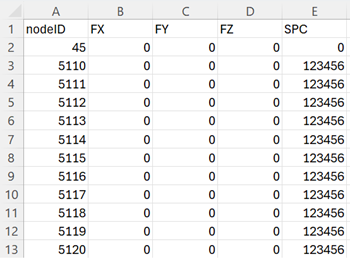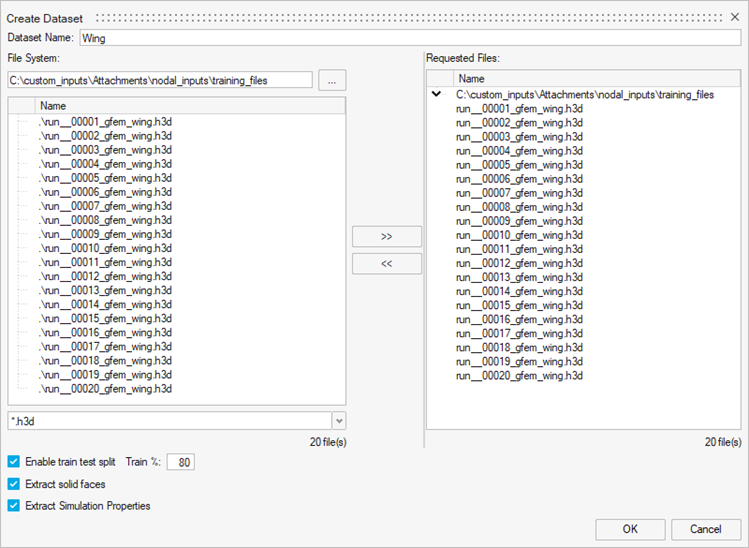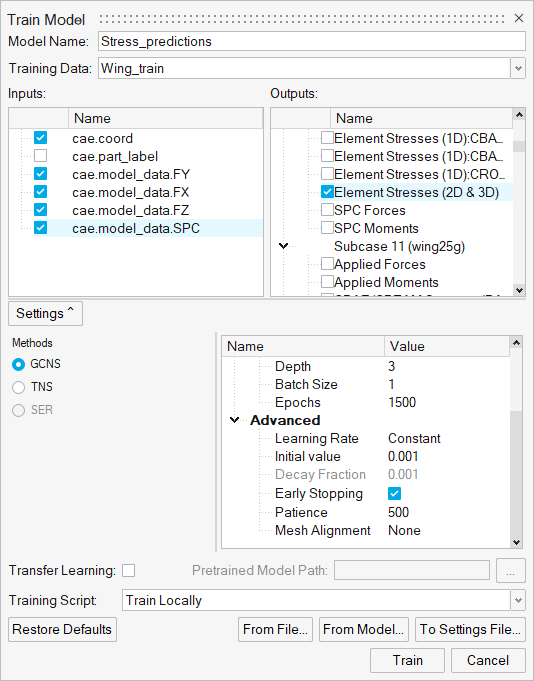Use Nodal Hook
For properties which are applied on selected nodes (such as forces or constraints) or to all nodes with varying values (such as distributed loads) within a model, the nodal hook should be used.
-
Open the nodal_inputs folder.
Inside the training_files folder, there are 20 .h3d files named run__0000X_gfem_wing.h3d and 20 .csv files named run__0000X_gfem_wing.csv files. Each .csv file contains a list of nodes and the values of the four custom inputs (applied forces in the X, Y, Z directions and the single point constraints) along with a header row.
Figure 1. Nodal Property Inputs 
- Open HyperMesh.
- From the menu bar, click to open the PhysicsAI ribbon.
-
Create a new project called nodal_inputs.
- Copy the nodal_inputs_hook.py file into the _hooks folder inside the project folder.
-
Create a new dataset using all the samples and name it Wing.
-
Train the model.
-
Test the model.
Ensure that the associated .csv files are also present while creating the test dataset.
-
Once the testing is complete, set the model to active.
Important: Setting a model as active will checkout a stacking license until the model is deactivated.
Note that only the nodes with one or more features defined on them are required in the .csv file. However, it is necessary that each node in the .csv file should have a value for all the input features. For example, in Figure 1, node 5110 does not have any forces defined and hence a value of 0 is used as a placeholder in columns FX, FY and FZ. In other words, the rectangular/tabular structure of the input data should be maintained.





